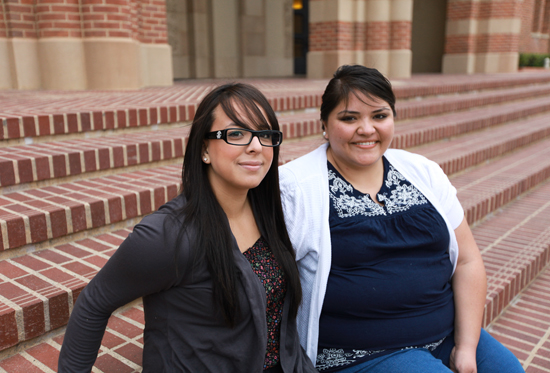Looking down from the hilltop of her family’s San Diego home, Monica Hernandez can see the sweep of the Tijuana skyline.
It’s been seven years since she last crossed the border, much in part to the escalation of drug-related violence, but the divide, only 25 miles away from her home, serves as an inescapable reminder of the complicated history she inherits as a third-generation Mexican American.
“In “˜Borderlands,’ Gloria Anzaldúa calls the area “˜la herida abierta’ ““ an “˜open wound’ that doesn’t heal,” said Hernandez, a third-year history and Chicana and Chicano studies student. “This region in general ““ Tijuana, Juarez, San Diego, even ”“ are like this third space in the middle where a lot of activity occurs that is unique to that place and that paves the path for drugs to be transported to either side.”
With family in Ciudad Juarez, a border town that has become almost synonymous with untenable drug-related violence, Hernandez is all too aware of the threat warring drug cartels pose in northern Mexico.
Since 2008, nearly 5,000 people have been slain in Juarez alone ““ 600 just this year. Throughout Mexico, an estimated 10,031 people have died in drug-related violence since 2007, according to the University of San Diego Trans-Border Institute.
But even from the geographic and cultural distance of Westwood, Hernandez is confronted with the drug-related violence taking place along the border, not because of proximity but through the nearly nightly news reports of the growing casualties in the fight among rivaling drug cartels and against Mexican security forces.
Hernandez said she believes the sensationalistic tone of some of the coverage worsens an already dire situation.
“A lot of people in L.A. and even San Diego are oblivious to what goes in Tijuana, so I think the media capitalizes on that. They instill fear, which feeds into a certain perspective many hold about the country’s culture,” Hernandez said. “That’s not to downgrade what’s happening, because there is definite violence in these border towns.”
Mexican border towns have long been a hotbed for drug trafficking, but the violence associated with the activity has heightened with President Felipe Calderón’s deployment of troops and federal police to combat well-heeled drug cartels in 2006, said Carlos Hernández, a doctoral student of contemporary Latin American history whose dissertation work focuses on the roots of drug trafficking in Mexico’s Western region, specifically Tijuana.
“The local and state law enforcement corporations were riddled with corruption and heavily infiltrated by the drug cartels, so President Calderón decided to escalate the military presence along the border with the United States,” Hernández said.
After the failure of the initial crackdown, Calderón and the Mexican government have recently begun to consider alternative approaches, Hernández said.
What goes underreported by the U.S. and Mexican media, he said, is the resiliency in the face of drug-related violence that has become part of people’s everyday life in the border towns.
For the extended family of Soraya Ramos, a second-year political science and Chicana and Chicano studies, absorbing the shock of finding dead bodies dropped off in alleyways or the concealment of one’s wealth on the streets of Tijuana has become normal.
“Their lives just go on. They personally don’t fear that their lives are in crossfire because they aren’t,” Ramos said. “There are always innocent victims, but it’s mostly when you’re involved in the wrong crowd and situations that you’re prone to encounter violence. It’s not a war in their neighborhood.”
Ramos added that she lived in Tijuana until she was 5 years old, and described her childhood there as relatively peaceful.
Ramos and her immediate family regularly visited Tijuana on the weekends up until a few years ago, when her mother was pulled over and surrounded by men in white vans who pulled rifles on her ““ a case of mistaken identity.
“When they realized, they shouted, “˜It’s not him, it’s not him’ and drove off. But we realized then that it could happen to anyone,” she said. “I did lose a lot of confidence in my hometown, and it felt very distant and dangerous for a while.”
After a yearlong break in visiting, Ramos said much of the family’s tension has been relieved.
“I refuse to let fear overtake me or prevent me from me seeing and interacting with my family,” she said.
Hernandez said calls from her great aunt in Juarez include reports of hearing gunshots in the streets outside the hair salon she goes to, as well as the conviction to remain in her upper-middle-class home.
Hernandez said her great aunt holds fast to the belief that her homeland will return to the way it once was ““ an attitude her niece sees as representative of a generational divide in responding to the upsurge in violence.
“All her children moved to El Paso because they don’t believe in the risk of waiting it out,” she said. “My great aunt has this vision of the border towns before the violence, before violence became normalized. But why should you have to accept a life like that? There is no reason people should have to live in fear.”
